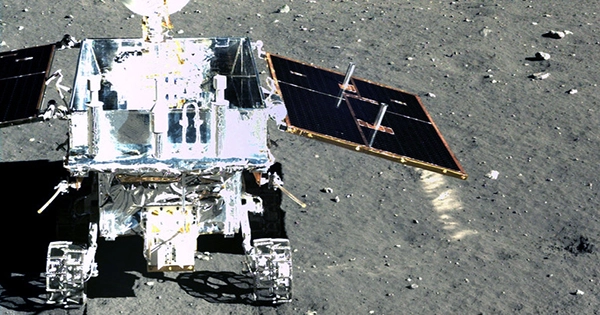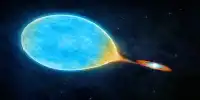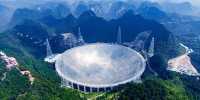China achieved history in January 2019 by landing the first-ever rover on the Moon is far side. For the past two years, the Yutu-2 rover has been traveling the Moon’s lesser-known side, its magnificent set of instruments providing invaluable insights into the unknown region. However, it is not simply the scientific instruments that are digging out the dirt, up there, even its wheels are conducting research. The Change 4 lander delivered the rover, which has gone more than 1,000 meters (3,300 feet) across the Moon’s surface (taking some gorgeous photographs and performing some great research, too).
Researchers have now utilized data from the rover’s movements to determine the qualities of lunar soil on the far side of the Moon, according to a paper published in Science Robotics. The rover’s journey allowed them to determine how stable the terrain was and what kind of regolith – as celestial bodies’ dirt known – it encountering. It appears to be considerably different from what the Apollo crew experienced. In fact, it has characteristics that are identical to dry sand on Earth.
“Yutu-2 has encountered different degrees of moderate slip and skid during its route, showing that the ground is largely flat on a global scale but sprinkled with occasional soft slopes.” Cloddy soil sticking to its wheels “indicates more lunar soil cohesiveness than seen at other lunar landing sites,” the authors write in the report. “Further identification results show that the regolith has bearing qualities similar to dry sand and sandy loam on Earth, indicating more bearing strength than that observed during the Apollo missions.” The longer duration of space weathering could be the reason for this.
Another difference is the amount of boulders and craters in the area, which appears to be significantly higher than what has been seen on the nearside. Fresh craters with highly reflective material, in particular, could be the result of secondary impacts, which are caused by lunar material being hurled up into the (non-)air by a meteorite and then crashing back on the surface. Yutu-2’s discoveries add to the growing body of knowledge about the differences between the two sides of the Moon, the one we see every day and the one we don’t (unless you were one of the Apollo astronauts that got to fly over it). Change 4 landed near the Moon’s South Pole on the eastern floor of the Von Kármán crater. To date, it is the first and only successful landing on the Moon’s far side.















